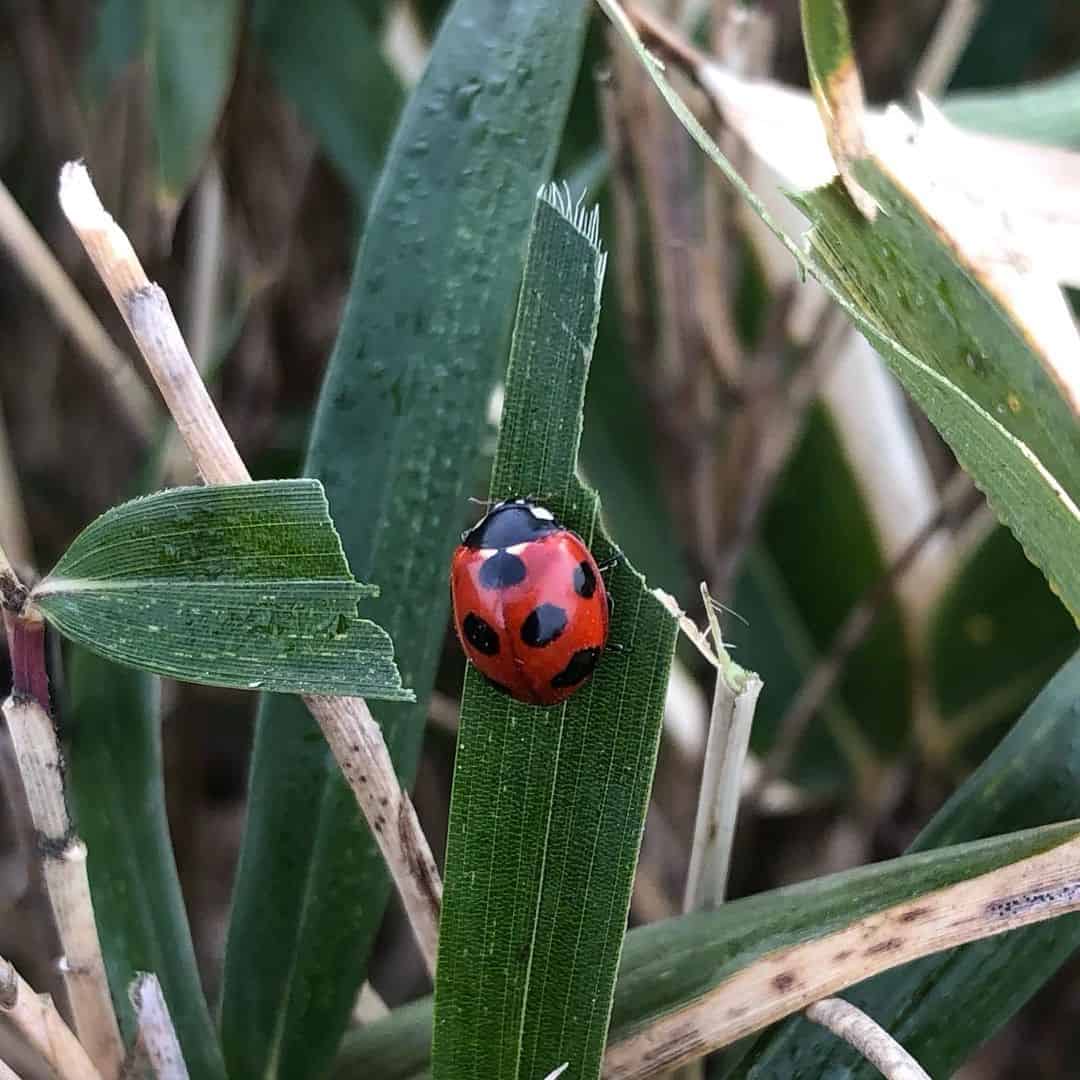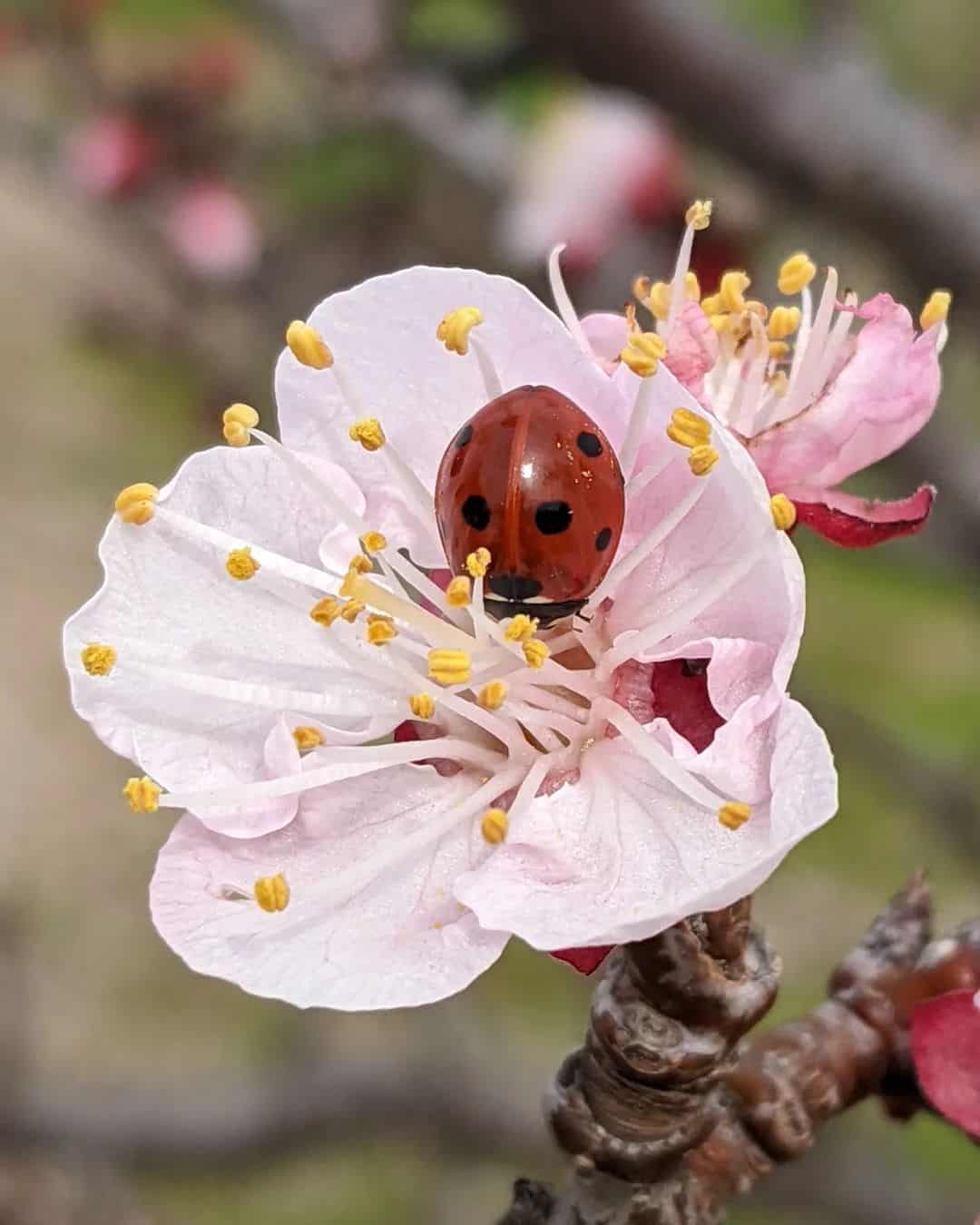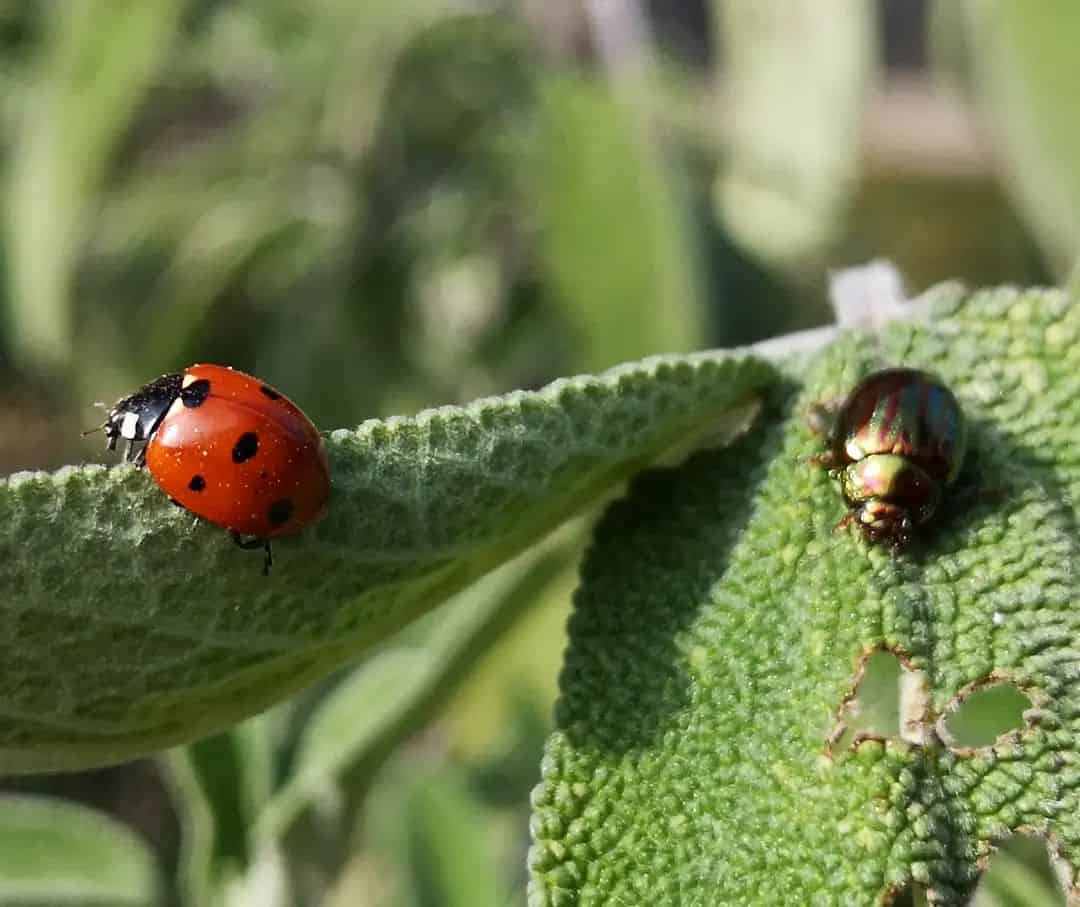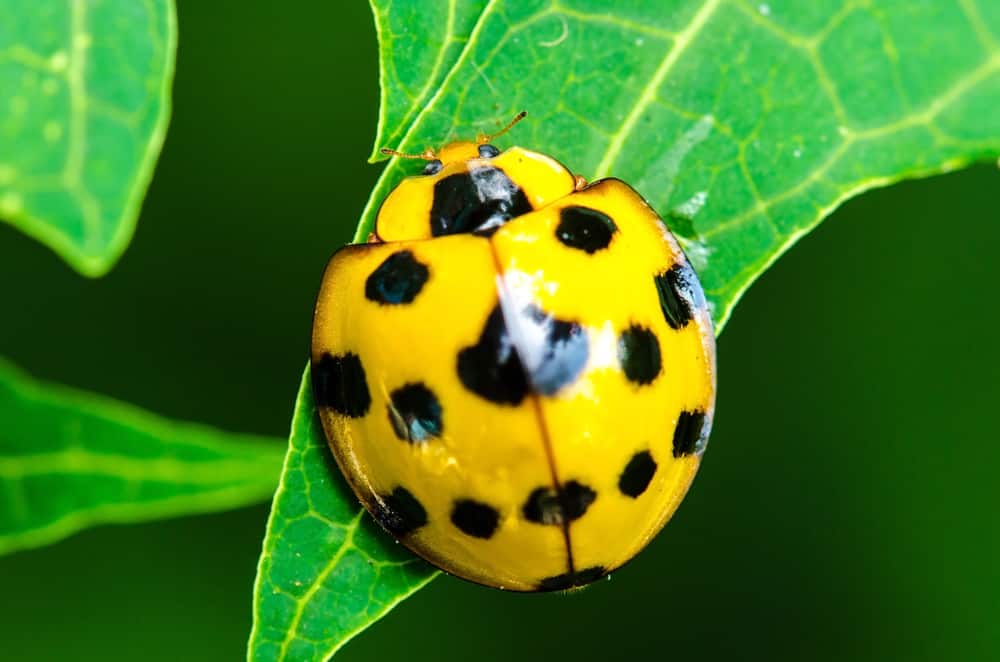Ladybugs are pretty rare and interesting insects. They are particularly known for their benefits, especially to farmers, and their overall uniqueness, which may also be the reason for their name. Have you ever wondered why these crawly insects are called ladybugs? We have too and have discovered a number of theories surrounding the origin of the name “ladybug” and why they were named that. In this article, we’ve discussed the ladybug name origin and everything you should know about them.
What are Ladybugs?
Ladybugs are also called ladybirds or ladybeetles, but may also be called different other names depending on the region or country. There are about 5000 different species in the world, all regarded as harmless and beneficial insects. They are part of the Coccinellide family and are mostly found on alfalfa, flowering plants, peas, beans (legumes), and clover.
They come in different colors, particularly yellow, orange, or red with tiny black spots on the top of their shell (carapace). The species of ladybug are differentiated by the number of spots they have. However, Ladybugs are said to not be true bugs but are more beetles.
Characteristics of the Ladybug
Ladybugs are colorful crawly insects, there’s more to them than that. Before going to the origin of their name, let’s get a bit familiar with them. Here are the characteristics of the ladybug that altogether sums up what they are:
1. Physical Appearance
The ladybug is a small round or oval-shaped insect, about 0.3-0.4 in length. Their larvae are completely dissimilar to their parent form. As while the larvae come in black with narrow bodies, their adult form has a range of colors from red to yellow and orange with small black spots on their wing coverings.
However, there is color is not only attractive but also a means of defense from predators. The colors are a warning sign to predators that they’re not tasty but are in fact toxic, because the brighter they are, the more toxicity they dispel. To further protect themselves, they let out an awfully smelling fluid from their legs that make them taste badly
They have short legs, sports antennae, and eyes on their head that can be drawn in and out of the pronotum. Their flight wings are thin and veined protected by the elytra, that is, the wing covers.
2. Habitat and Origin
Ladybugs were first found in Europe and Asia but were spread throughout due to their unique benefits. They survive anywhere with temperate conditions, thus, they can be found in all continents of the world except Antarctica because of their low temperature. They also can be seen wherever aphids are, especially in trees, gardens, shrubs, forests, or small plants. During winter, ladybugs go into covered areas like caves or dense foliage to stay protected.

3. Growth
The first stage of the lifecycle of ladybugs is their egg stage. They lay up to 300 tiny eggs, depending on their species, on leaves that hatch after a few days of incubation. The hatched eggs turn into larvae, which are caterpillar-like with a dark slim long bodies. The larvae take about two weeks to fully grow while feeding on aphids during those times and shedding their skin. Then, they stop eating and go on to the next stage of their growth which is pupa merely attaching itself to the leaf. It is from this stage that an adult ladybug emerges.
4. Diet
These little un-lady-like insects feed on aphids which is one of their most loved parts. Ladybugs can eat up to 75 aphids per day but this doesn’t mean that’s all they feed on. They also eat other insects such as mites and fruit flies and do so non-destructively without harming the crops. So, they can well replace the need for pesticides in any farm or garden. Usually, these insects are bought from suppliers by farmers and gardeners to help in keeping tiny pests away.
5. Lifecycle
Ladybugs live up to a year in their adult stage, however, they’re growing stage lasts for about two months which is an addition to their lifecycle. The temperature of the area they’re in may however affect their life span since they barely survive in any condition lower than 50 degrees Fahrenheit. Additionally, they may often also fall prey to birds, frogs, and other bugs.
Why Ladybugs are Called Ladybugs
Now, we’ll get to the crux of this article which is the reason for the ladybug’s popular name. We have already established that ladybugs are not true bugs because they do not possess certain attributes or features of bugs, particularly associated with their lifecycle. So, some preferably call them ladybeetles but their most popular name remains ladybugs.
While the contention between their genus of beetle or bug is understandable, we may question the addition of “lady” in their name since these insects do not portray any special feminine characteristics or traits. However, the reason for their name is not in any way associated with their traits or characteristics.

Theories Surrounding the Origin of the Name
One theory surrounding the origin of the name, “ladybug” is that it is tied to Christianity and the belief of old European farmers. The farmers who then did not have pesticides and had their crops constantly pest-infested prayed to the Virgin Mary for help. It is believed that in answer to their prayers, Mary sent a swarm of tiny red beetles to get rid of the pests. They named these beetles “beetle of our Lady”, which was then shortened to “ladybeetle”, ‘ladybird” or “ladybug”.
The farmer’s beliefs were strengthened by the ladybug’s red shell which was similar to the Virgin Mary’s cloak usually seen in Biblical references. And truly, ladybugs help to kill pests like aphids in the farms, thereby, relieving farmers and gardeners of the pain of damaged crops. These insects are seen as a gift of God and have been treated as such. They are also identified as a sign of goodwill. They’ve been spread throughout the world and are commonly accorded names associated with God or Mary. For instance, in Germany, they are called “Marienkafer”, which means “Mary’s beetle”; “la bete a bon Dieu” is what they are called in France and it translates to “God’s animal”; in Russia, they are called “Bozhya korovka” meaning “God’s little cow”.
Generally, the people have a strong association with the ladybug and regard them as a reward from heaven.
Benefits of the Ladybug
We already know that ladybugs are pest-eating insects, which is the most beneficial and popular attribute that they possess. This single quality brings about other benefits which make this insect great. Here are some of the benefits of ladybugs;
1. Pest Control
This quality of the ladybug is their most important one, which even is an underlying reason for their name. They can be said to be the farmer’s best friend, being in charge of pest control as they merely feed their belly. Having them in gardens, houseplants, or crop farms is key to driving off pests such as aphids, mites, mealybugs, spider mites, and scale insects.
A ladybug can eat up to 5000 insects in its lifetime, and almost 70 per day. This is why these voracious eating insects are welcomed by gardeners to ward off harmful pests from preying on their plants.
2. Reduced Use of Pesticides

Having ladybugs equals no pests which relatively translates to no use of pesticides. Although pesticides are efficient means of eradicating pests and weeds in any green land, they can also be harmful to plants and crops. This is because pesticides cannot differentiate weeds from wildflowers and pest insects and non-pest species.
This has led to a look into natural alternatives to solving pest problems. And ladybugs are just the perfect answer since they control pests without any form of harm to the plants or crops.
3. Pollinators
Although ladybugs are not great pollinators, they still do a pretty good job. Most species of ladybugs also collect pollen besides feeding on pests which helps the plant in reproduction. Pollens are a source of minerals for ladybugs which they will be lacking otherwise. So while they feed on pollen and move from one plant to another, the leftover pollen on their exoskeleton rubs on the next flower which helps in pollination.
4. Encouraging Wildlife
Introducing ladybugs to your farm means you have to fulfill their living conditions. Thus, you have to create a condition similar to their natural habitat. While this has been removed from farms beforehand, the need to use ladybugs has re-introduced them. This has helped to create a natural ecosystem and a safer place for other harmless insects like butterflies to thrive in.
Conclusion
Ladybugs or ladybirds, as it is called in your country are harmless, colorful, and gracious insects. Considering their benefits and usefulness, it’s hard to not believe they’re gifts from God, as their name suggests. From pest control on farmlands and gardens to pollination, they have proven to be a beneficial part of human life. As long as you treat them well by giving them the right temperate condition and food, they’ll ward off all kinds of pests from your gardens.
